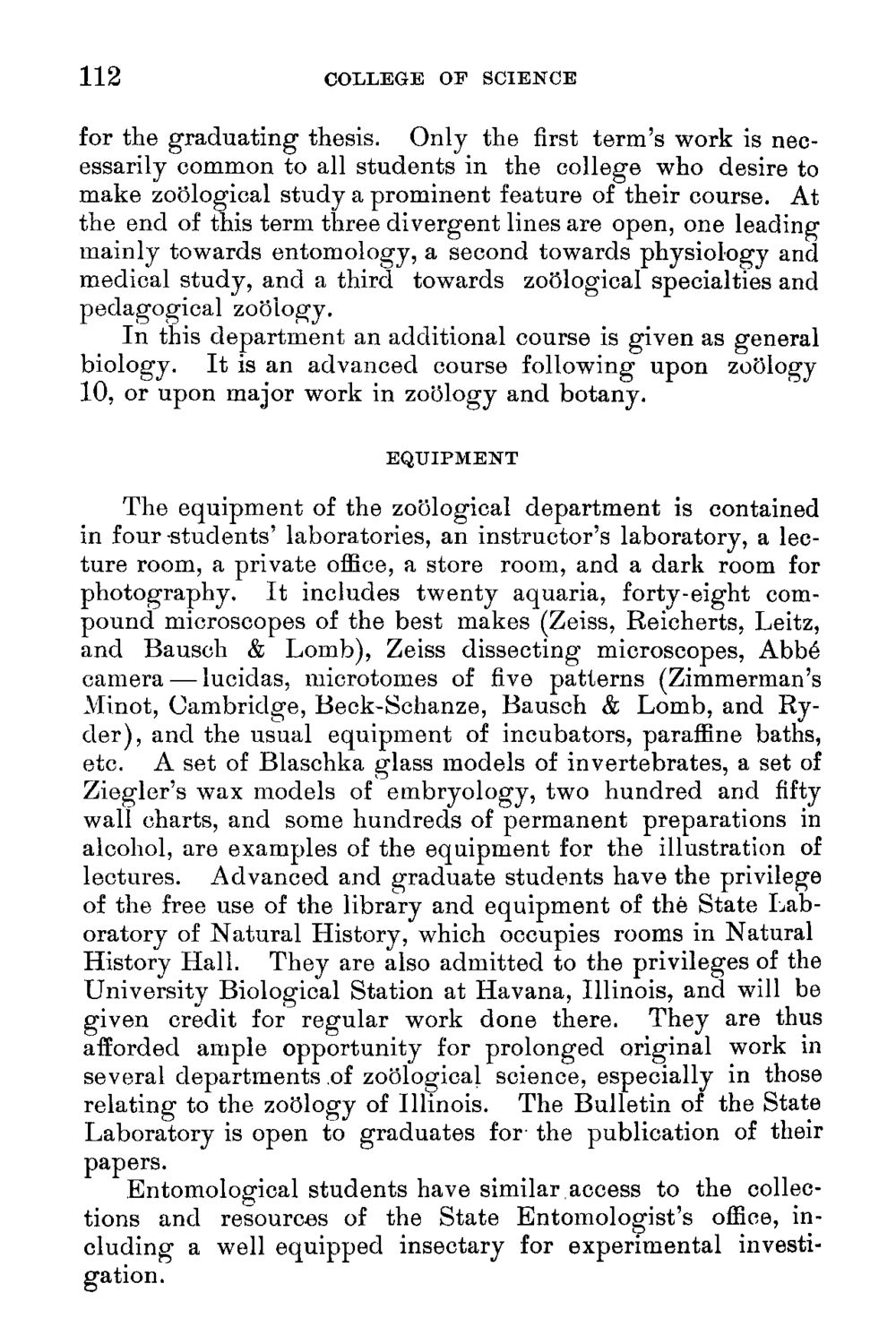| |
| |
Caption: Course Catalog - 1895-1896
This is a reduced-resolution page image for fast online browsing.

EXTRACTED TEXT FROM PAGE:
112 COLLEGE OF SCIENCE for the graduating thesis. Only the first term's work is necessarily common to all students in the college who desire to make zoological study a prominent feature of their course. At the end of this term three divergent lines are open, one leading mainly towards entomology, a second towards physiology and medical study, and a third towards zoological specialties and pedagogical zoology. In this department an additional course is given as general biology. It is an advanced course following upon zoology 10, or upon major work in zoology and botany. EQUIPMENT The equipment of the zoological department is contained in four students' laboratories, an instructor's laboratory, a lecture room, a private office, a store room, and a dark room for photography. It includes twenty aquaria, forty-eight compound microscopes of the best makes (Zeiss, Reicherts, Leitz, and Bausch & Lomb), Zeiss dissecting microscopes, Abbe camera — lucidas, microtomes of five patterns (Zimmerman's Minot, Cambridge, Beck-Schanze, Bausch & Lomb, and Ryder), and the usual equipment of incubators, paraffine baths, etc. A set of Blaschka glass models of invertebrates, a set of Ziegler's wax models of embryology, two hundred and fifty wall charts, and some hundreds of permanent preparations in alcohol, are examples of the equipment for the illustration of lectures. Advanced and graduate students have the privilege of the free use of the library and equipment of the State Laboratory of Natural History, which occupies rooms in Natural History Hall. They are also admitted to the privileges of the University Biological Station at Havana, Illinois, and will be given credit for regular work done there. They are thus afforded ample opportunity for prolonged original work in several departments of zoological science, especially in those relating to the zoology of Illinois. The Bulletin of the State Laboratory is open to graduates for the publication of their papers. Entomological students have similar,access to the collections and resources of the State Entomologist's office, including a well equipped insectary for experimental investigation.
| |